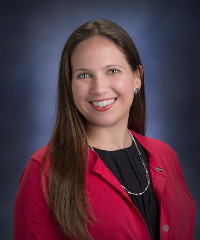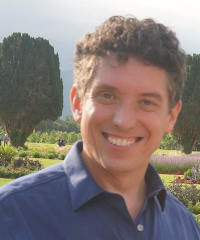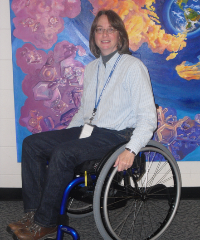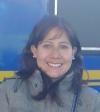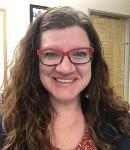Community Blogs
Community Blogs
Discover how the GLOBE community is engaging in all things GLOBE through the community blog posts below.
Learn how to create a GLOBE community blog post.
Filter By:
Blogs List
GLOBE Students!
The GLOBE Clouds team is hoping you are all collecting observations or downloading and analyzing clouds data for the upcoming U.S. Student Research Symposia or the International Virtual Science Symposium . If you are using data downloaded from the GLOBE site, you will see a T between the date and time of the observations (example - 2018-10-01 T 14:00:00).
We got together with Dr. Helen Amos, who put together steps on how to take the "T" out using Excel and Google sheets . The result is having a date and time that looks ...
Read More »
Posted in:
Event Topics:
CAMPAIGNS AND PROJECTS (IOPS, ETC)
COMPETITIONS
SCIENCE SYMPOSIA AND FAIRS
GLOBE Science Topics:
SCIENTIST SKILLS
MEETINGS/CONFERENCES
GLOBE PROTOCOLS
Investigation Areas:
ATMOSPHERE
Learning Activities:
ATMOSPHERE AND CLIMATE
News Topics:
VIRTUAL SCIENCE FAIR
REGIONS
Student Research Reports:
U.S. STUDENT RESEARCH SYMPOSIA (SRS)
INTERNATIONAL VIRTUAL SCIENCE SYMPOSIUM REPORT
STANDARD RESEARCH REPORT
Whenever you submit a cloud observations, the GLOBE Clouds team at NASA Langley Research Center looks for satellites that were over your area at about the same time. The team then gathers the information from these satellites and compares them to your own observations. The result is a satellite match table that you receive through an email!
The table allows you to compare what you saw and what the satellite noted. You also have the actual satellite image at the bottom of the table! A new "How to Read a Satellite Match" page is available for you to learn ...
Posted in:
Curriculum:
EDUCATION RESEARCH
SCIENCE AND MATH
Event Topics:
SCIENCE SYMPOSIA AND FAIRS
GLOBE Science Topics:
SCIENTIST SKILLS
GLOBE PROTOCOLS
GENERAL SCIENCE
Investigation Areas:
ATMOSPHERE
Learning Activities:
ATMOSPHERE AND CLIMATE
News Topics:
VIRTUAL SCIENCE FAIR
Primary Audience:
TRAINERS
TEACHERS
STUDENTS
PARTNERS
SCIENTISTS
COUNTRY COORDINATORS
I just updated HoloGLOBE to v1.0.2. For those of you new to this app, HoloGLOBE brings NASA and NOAA visualizations of the Earth to the palm of your hand through augmented reality (AR). You can read more about the app here: http://www.palmyracove.org/InstituteforEarthObservations/HoloGLOBE.aspx
In this latest release, I have added play/pause functionality to the MyNASAData module. The MyNASAData is essentially an augmented reality version of GLOBE's Earth System Poster. In addition the new ICESat-2 module has been added. The ICESat-2 module was built by Emme Wiederhold, a ...
Posted in:
Curriculum:
STEM
ASSESSMENT AND EVALUATION
EDUCATION RESEARCH
LANGUAGE CULTURE AND ARTS
SCIENCE AND MATH
TECHNOLOGY
Event Topics:
CAMPAIGNS AND PROJECTS (IOPS, ETC)
GLOBE LEARNING EXPEDITIONS
OTHER
SCIENCE SYMPOSIA AND FAIRS
MEETINGS
WORKSHOPS
COMPETITIONS
Field Campaigns:
SCRC - PHASE 2
SCRC
FLEXE
CARBON CYCLE
WATERSHEDS
SEASONS AND BIOMES
SCUBANAUTS
EL NIÑO
GGIC
SCRC - PHASE 1
SMAP
SURFACE TEMPERATURE
GPM
GLOBE Science Topics:
EARTH SYSTEM SCIENCE
GENERAL SCIENCE
GENERAL SCIENCE @ES
CLIMATE CHANGE
DATA INCLUDED
BACKYARD SCIENCE
MEETINGS/CONFERENCES
CLIMATE
SCIENTIST SKILLS
EARTH AS A SYSTEM
GLOBE PROTOCOLS
GLOBE Working Groups:
EVALUATION WORKING GROUP
SCIENCE WORKING GROUP
EDUCATION WORKING GROUP
TECHNOLOGY WORKING GROUP
Investigation Areas:
BIOSPHERE
ATMOSPHERE
EARTH AS A SYSTEM
HYDROSPHERE
PEDOSPHERE (SOIL)
Learning Activities:
EARTH AS A SYSTEM
ATMOSPHERE AND CLIMATE
LAND COVER/BIOLOGY
HYDROLOGY
SOIL
News Topics:
VIRTUAL SCIENCE FAIR
IOPS
REGIONS
CALENDAR
SCRC RESEARCH
TRAINING
COMPETITIONS
MEETINGS
VIDEO
WEB MAINTENANCE / ENHANCEMENTS
Primary Audience:
PARTNERS
SCIENTISTS
ALUMNI
COUNTRY COORDINATORS
TRAINERS
TEACHERS
STUDENTS
Teacher's Guide:
GRADE LEVELS
DOCUMENT TYPES
TIME REQUIREMENTS
LANGUAGES
STANDARDS REQUIREMENTS
INVESTIGATION AREA DOCUMENTS
Bill Smith, left, along with Kris Bedka.
The NASA GLOBE Clouds team is excited to share with you this recent news article about two NASA scientists that help match your observations with satellite data - Bill Smith and Kris Bedka. They, along with Louis Nguyen lead SatCORPS, at team at NASA Langley Research Center that use expertise in clouds to make better weather predictions.
Read more about their work at https://www.nasa.gov/feature/langley/how-cloud-data-is-improving-weather-forecasts
Posted in:
Curriculum:
STEM
SCIENCE AND MATH
TECHNOLOGY
Event Topics:
OTHER
GLOBE Science Topics:
EARTH AS A SYSTEM
SCIENTIST SKILLS
GENERAL SCIENCE
GLOBE PROTOCOLS
CLIMATE
Investigation Areas:
ATMOSPHERE
Primary Audience:
TRAINERS
TEACHERS
STUDENTS
PARTNERS
SCIENTISTS
ALUMNI
COUNTRY COORDINATORS
A fourth grade student from Public School 122 (Queens, NY), recently visited NASA Langley for a week. During his visit, he studied the GLOBE Aerosol Protocol. He went outside the Atmospheric Sciences building and collected aerosol data using a Calitoo sun photometer, which measures Aerosol Optical Thickness (AOT) at three wavelengths: 465nm (blue), 540nm (green) and 619nm (red).
After downloading the data measured with the Calitoo to his laptop, the student learned how to access AERONET data. The AERONET ( AE rosol RO botic NET work) project is a federation of ground-based remote ...
Posted in:
Curriculum:
STEM
EDUCATION RESEARCH
SCIENCE AND MATH
Event Topics:
CAMPAIGNS AND PROJECTS (IOPS, ETC)
SCIENCE SYMPOSIA AND FAIRS
GLOBE Science Topics:
GLOBE PROTOCOLS
GENERAL SCIENCE
GLOBE Working Groups:
SCIENCE WORKING GROUP
Investigation Areas:
ATMOSPHERE
AEROSOLS
News Topics:
VIRTUAL SCIENCE FAIR
Primary Audience:
TEACHERS
STUDENTS
PARTNERS
Mr. Jeff Bouwman
The NASA GLOBE Clouds team is excited to highlight Mr. Jeff Bouwman, a 6th and 7th grade teacher at Shumate Middle School ( Gibraltar School District ) in Gibraltar, MI. Mr. Bouwman was one of the top 10 GLOBE Cloud observers for 2017 and we are very excited for the research his students are doing with the data.
We invite you to read his most recent post - "It's Cool to Have Your Head in the Clouds" - and read the research his students are doing with 2-years of cloud observations!
If you would ...
Posted in:
Curriculum:
STEM
EDUCATION RESEARCH
SCIENCE AND MATH
TECHNOLOGY
Event Topics:
SCIENCE SYMPOSIA AND FAIRS
GLOBE Science Topics:
SCIENTIST SKILLS
GLOBE PROTOCOLS
GENERAL SCIENCE
BACKYARD SCIENCE
Investigation Areas:
ATMOSPHERE
CLOUDS
Learning Activities:
ATMOSPHERE AND CLIMATE
News Topics:
VIRTUAL SCIENCE FAIR
COMPETITIONS
Primary Audience:
TRAINERS
TEACHERS
STUDENTS
SCIENTISTS
Teacher's Guide:
GRADE LEVELS
INVESTIGATION AREA DOCUMENTS
NASA GLOBE Clouds: Spring Cloud Observations Data Challenge
Audience : Students and teachers all grade levels, informal educators, and the general public
Dates : March 15, 2018 - April 15, 2018
The NASA GLOBE Clouds team at NASA Langley Research Center in Hampton, VA is excited to announce the NASA GLOBE Clouds: Spring Cloud Observations Data Challenge . Participants are invited to enter up to 10 cloud observations per day from March 15, 2018 to April 15, 2018 using the GLOBE Program’s data entry options or using GLOBE Observer app . GLOBE and ...
Posted in:
Curriculum:
STEM
EDUCATION RESEARCH
SCIENCE AND MATH
TECHNOLOGY
Event Topics:
OTHER
COMPETITIONS
GLOBE Science Topics:
SCIENTIST SKILLS
GLOBE PROTOCOLS
GENERAL SCIENCE
BACKYARD SCIENCE
Investigation Areas:
ATMOSPHERE
CLOUDS
News Topics:
COMPETITIONS
Primary Audience:
TRAINERS
TEACHERS
STUDENTS
PARTNERS
ALUMNI
COUNTRY COORDINATORS
Teacher's Guide:
GRADE LEVELS
Learning science involves learning important concepts, conducting experiments to see first-hand how researchers discovered and confirmed some elements of science concepts, and learning how to think scientifically. With this complete approach to learning science, students are well-prepared to deal with the natural world around them and to make wise decisions when confronted with various choices. The ability to think scientifically is a valuable skill in almost all aspects of life and doing science teaches scientific habits of mind.
Students can do science through research projects ...
Posted in:
Curriculum:
STEM
SCIENCE AND MATH
GLOBE Science Topics:
SCIENTIST SKILLS
GENERAL SCIENCE
BACKYARD SCIENCE
GLOBE Working Groups:
SCIENCE WORKING GROUP
Investigation Areas:
ATMOSPHERE
EARTH AS A SYSTEM
HYDROSPHERE
PEDOSPHERE (SOIL)
BIOSPHERE
News Topics:
VIRTUAL SCIENCE FAIR
COMPETITIONS
Primary Audience:
TEACHERS
STUDENTS
PARTNERS
COUNTRY COORDINATORS
Observations of daily precipitation have been a part of GLOBE from the beginning. At the start, GLOBE’s participation model was that schools would take measurement following all of the original 17 protocols. Atmosphere temperature, precipitation, cloud, and soil moisture measurements were to be collected daily at a site easily accessible to the school. A permanent installation of an instrument shelter containing a max/min thermometer mounted to a post along with a rain gauge was the expected norm with other measurements taken nearby. Daily temperature and precipitation measurements were ...
Posted in:
Field Campaigns:
EL NIÑO
GPM
GLOBE Science Topics:
GLOBE PROTOCOLS
GLOBE Working Groups:
SCIENCE WORKING GROUP
EDUCATION WORKING GROUP
Investigation Areas:
ATMOSPHERE
Primary Audience:
TRAINERS
TEACHERS
STUDENTS
PARTNERS
COUNTRY COORDINATORS
Teacher's Guide:
DOCUMENT TYPES
From the start, the measurement of daily maximum and minimum air temperature within one hour of local solar noon has been a key GLOBE protocol. The low cost approach was to use a U-tube thermometer housed in a wooden instrument shelter facing away from the equator. The U-shaped tube contained mercury with pins on either side of the mercury. As the air temperature warmed the pin on one side would move while the other pin stayed in place; when the air cooled, the pin on the other side would be pushed up. The pins were held in place by magnetized strips behind the thermometer tube so that ...
Posted in:
Curriculum:
STEM
TECHNOLOGY
GLOBE Science Topics:
EARTH AS A SYSTEM
EARTH SYSTEM SCIENCE
GLOBE PROTOCOLS
CLIMATE CHANGE
CLIMATE
GLOBE Working Groups:
SCIENCE WORKING GROUP
Investigation Areas:
ATMOSPHERE
Primary Audience:
TEACHERS
TRAINERS
STUDENTS
PARTNERS
SCIENTISTS
ALUMNI
COUNTRY COORDINATORS
Quaking aspens can grow in a wide range of environmental conditions. They can tolerate a wide variety of variations in climate and environmental conditions including slope, moisture, surrounding vegetation, and soil ( https://www.fs.fed.us/wildflowers/beauty/aspen/ecology.shtml ). I found this information with a simple web search. But, before there was access to infinite articles, websites, and papers all a click away, scientists had to figure out growth trends using data. So, before I decided to do a web search about the environmental conditions of aspen habitats (my memorized aspen ...
Posted in:
Event Topics:
SCIENCE SYMPOSIA AND FAIRS
GLOBE Science Topics:
SCIENTIST SKILLS
Investigation Areas:
EARTH AS A SYSTEM
HYDROSPHERE
PEDOSPHERE (SOIL)
ATMOSPHERE
BIOSPHERE
News Topics:
VIRTUAL SCIENCE FAIR
Primary Audience:
TEACHERS
STUDENTS
Heavy rains, floods and thunderstorms have affected thousands of families in Perú since January 14 th , 2017. Apparently, Peruvians were not prepared to face this strong natural events as well as their later consequences: Overpopulation of mosquitos that spread dengue and other diseases as chikungunya virus, reduction of some important crops (rice, banana, yucca, yellow corn, avocado, cotton, asparagus, sugar cane, mango, grapes, alfalfa and lemon) (El Comercio, 2017 a ) and damages in many public facilities (bridges and roads) and private property (houses) - 100000 victims, 157000 houses ...
Posted in:
Event Topics:
CAMPAIGNS AND PROJECTS (IOPS, ETC)
Field Campaigns:
EL NIÑO
SMAP
GLOBE Science Topics:
CLIMATE
GLOBE Working Groups:
SCIENCE WORKING GROUP
Investigation Areas:
EARTH AS A SYSTEM
HYDROSPHERE
PEDOSPHERE (SOIL)
ATMOSPHERE
BIOSPHERE
Consider the rain gauge used in GLOBE, CoCoRaHS, and other citizen science programs. Just four pieces plus 2 mounting screws – an inner graduated cylinder, an outer cylinder, a cap/funnel, and a mounting bracket. The area of the outer tube is exactly 10 times the areas of the inner tube and the cap/funnel, so the graduations on the inner cylinder can be spaced ten times further apart. Thus, 0.2 mm of rain fills the inner tube to a depth of 2.0 mm, which one can read.
In addition, if heavy rainfall fills the inner cylinder, the rest of the rainfall overflows into the outer cylinder, ...
Posted in:
Curriculum:
STEM
Field Campaigns:
EL NIÑO
GPM
GLOBE Science Topics:
BACKYARD SCIENCE
GLOBE PROTOCOLS
Investigation Areas:
ATMOSPHERE
Primary Audience:
TEACHERS
STUDENTS
ALUMNI
In most scientific research an important test is whether the results of an experiment can be repeated, typically repeated by another lab and research group. A result that cannot be confirmed in this way is generally viewed as invalid. This is a great test for controlled experiments where virtually identical experimental conditions may be achieved.
In Earth science research involving observations of the natural world, experimental conditions cannot be reproduced. For environmental research the standard must switch for repeatable to intercomparable – capable of being compared. ...
Posted in:
GLOBE Science Topics:
GENERAL SCIENCE
EARTH SYSTEM SCIENCE
BACKYARD SCIENCE
GLOBE PROTOCOLS
Investigation Areas:
HYDROSPHERE
PEDOSPHERE (SOIL)
ATMOSPHERE
BIOSPHERE
Primary Audience:
TRAINERS
TEACHERS
STUDENTS
SCIENTISTS
ALUMNI
A version of this blog was originally posted on November 14, 2012 .
If you have been listening to the news or following along with weather and climate web pages, you have probably heard the term "ENSO." ENSO, or El Niño-Southern Oscillation, is a quasi-periodic climate pattern that occurs in the tropical Pacific Ocean. When the conditions change, the atmosphere responds in many different ways. In certain locations, it is cloudier and it rains more, while in others it’s clear and dry. Scientists are forecasting El Niño conditions to start ...
Posted in:
Curriculum:
SCIENCE AND MATH
GLOBE Science Topics:
CLIMATE
Investigation Areas:
ATMOSPHERE
Blog originally posted on The GLOBE Scientists' Blog: http://blog.globe.gov/sciblog/2013/05/15/the-community-cloud-atlas/
During our time in the Atmospheric Science doctoral program at Colorado State University (CSU), we would take breaks from frustrating programming efforts and run upstairs to the roof of the building to take pictures of clouds. We would identify them by name, describe the conditions in which they were forming, and head back inside to see if we could put them within the context of the radar and satellite imagery. As our collection continued to grow, we ...
Posted in:
Investigation Areas:
ATMOSPHERE
CLOUDS
Blog originally posted on The GLOBE Scientists' Blog: http://blog.globe.gov/sciblog/2013/03/06/connecting-pollutants-and-air-temperature-in-the-maldives/
With climate change, there are many relationships that are understood, and many others that are not. Dr. Veerabhadran Ramanathan from The Scripps Institute in San Diego has spent the last fifteen years in the Maldives, a nation south of India that is comprised of over 1,200 islands, studying the relationship between air pollutants, cloud formation and air temperature.
The Maldives are a great location for ...
Posted in:
Field Campaigns:
CARBON CYCLE
GLOBE Science Topics:
GENERAL SCIENCE
CLIMATE CHANGE
CLIMATE
Investigation Areas:
ATMOSPHERE
Blog originally posted on the GLOBE Scientists' Blog: http://blog.globe.gov/sciblog/2013/01/23/trees-in-trouble-what-affect-does-tree-mortality-have-on-climate-change/
Through our trees in trouble series, we’ve examined trees in the Sahel zone in Africa and the United States . This problem, climate change and dying trees, has been seen on every continent, the only exception being Antarctica, due to the lack of vegetation on the frozen continent. Scientists have recently found that there is an alarming loss rate of big, old trees, whose ages range ...
Posted in:
GLOBE Science Topics:
GENERAL SCIENCE
CLIMATE CHANGE
CLIMATE
Investigation Areas:
ATMOSPHERE
BIOSPHERE
Blog previously posted on The GLOBE Scientists' Blog: http://blog.globe.gov/sciblog/2013/01/16/a-tale-of-two-extremes/
Weather extremes have become a common theme in the news headlines the past few weeks. For example, nearly every part of the United States has been experiencing one of two extremes – either frigid cold or record-breaking high temperatures. Places like Arizona and California experienced below-freezing temperatures, which can have potential impacts on the crops grown in these typically balmy regions. In contrast, cities in the Southeast U.S., such as ...
Since the end of January 2012, Europe has been experiencing record-breaking cold temperatures and heavy snowfalls. Temperatures are dropping to -40°C (-40°F) and below in Europe. The canals of Venice are freezing over (the first time since 1991) and sections of the Black Sea have frozen (the first time since 1977). And, Rome has received its first substantial snowfall since 1986.
A small boat cuts through the ice along a canal in Venice. Photo by Marco Sabadin/AFP/Getty Images
The frozen Black Sea in Ukraine (Reuters photo) ...
Posted in:
Field Campaigns:
SCRC
GLOBE Science Topics:
CLIMATE CHANGE
CLIMATE
Investigation Areas:
ATMOSPHERE
—
20 Items per Page






